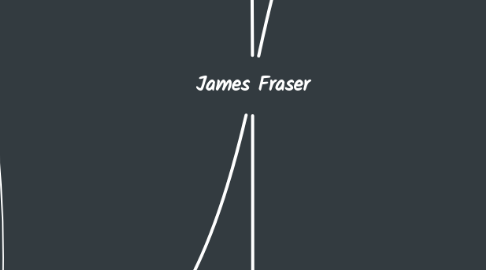
1. Wound assessment
1.1. Non-viable and unstageable: necrotic wound on left heel (lateral aspect) with no exudate and odour
1.1.1. Tissue
1.1.1.1. Colour of the wound is black suggesting necrotic tissue has formed
1.1.2. Inflammation/infection
1.1.2.1. Delayed healing
1.1.2.2. Slight inflammation surrounding the wound
1.1.2.3. Developed into a chronic wound
1.1.2.3.1. Incomplete wound epithelialisation
1.1.2.3.2. Periwound developing: skin is dry and peeling around the edges with a yellow tinge
1.1.2.4. No blood flow
1.1.3. Moisture
1.1.3.1. No moisture/exudate
1.1.3.1.1. Indicating no care or management attempted as of recently
1.1.3.2. Could be covered by necrotic tissue(?)
1.1.3.2.1. Slough
1.1.3.2.2. Dead skin
1.1.3.2.3. Bacteria
1.1.4. Edges
1.1.4.1. Rolled
1.1.4.1.1. Prevents epithelialisation as it prevents tissue from migrating
1.1.5. Surrounding skin
1.1.5.1. Formation of callous: indicated by the yellow tinge at the border of the wound
1.1.5.2. Ankle brachial pulse is 0.7
1.1.5.2.1. Indication of vascular problem
2. Decreased wound healing
3. Patient Assessment
3.1. Physical
3.1.1. Past medical history
3.1.1.1. Ishcaemic heart disease
3.1.1.2. High cholesterol
3.1.1.3. Coronary bypass surgery
3.1.2. Age
3.1.2.1. Decreased blood flow to limbs
3.1.3. Decreased mobility due to surgery
3.2. Psychosocial
3.2.1. Physical activites
3.2.1.1. Golfing 3 times a week
3.2.1.2. Tending to 5 acre land and garden
3.2.2. Socialising
3.2.2.1. Playing poker with friends
3.2.2.2. Interacting with family members who live less than 15 km away
3.2.3. Anxiety
3.2.3.1. May worry about wounds progress and situation
3.2.4. Isolation
3.2.4.1. Unable to perform daily task
3.2.4.2. Imobilised: unable to do hobbies
3.2.4.3. May not want to interact with friends due to stigma of wound
4. Decreased wound healing
5. Increased wound healing
6. Great support system
7. Provide distraction about debilitating condition
8. Increased dependency on others
9. Goals of treatment
9.1. Promote comfort and mobility
9.1.1. Elevating both foot using a pillow
9.1.1.1. Increasing comfort
9.1.1.2. Limiting pressure sores
9.1.1.3. Preventing the wound from being distubed
9.1.2. Using oapl heel cushion during sleep
9.1.3. Rotating foot and other prone areas every 10 minutes during recovery
9.1.4. Moderating phyiscal activities
9.2. Promote wound heaing
9.2.1. Education: families and friend
9.2.1.1. how to manage
9.2.1.2. how to dress wound properly
9.2.1.3. how to manage during daily life
9.2.2. Altering diet while adressing high cholsterol
9.2.2.1. Low GI foods: sustained fullness, preventing overeating
9.2.2.1.1. beans
9.2.2.1.2. wholegrain foods
9.2.2.1.3. starchy fruits and vegetable
9.2.2.1.4. Nuts: almonds, peanuts
9.2.2.2. Fish oil supplements: omega 3 and 6 can help regulate blood pressure
9.2.2.3. Vitamin C rich foods: encourages wound healing by allowing skin growth
9.3. Increase independece
10. Wound category
10.1. Mechanical Debridement: wound irrigation by scorring with aseptic scalpel or scisors
10.1.1. Protection
10.1.1.1. Hydrocolloid sheet (Duoderm)
10.1.1.2. Mepilex
10.1.1.2.1. Contains moisture within the wound
10.1.1.2.2. Acts as secondary dressing
10.1.2. Wound cleansing
10.1.2.1. Polyhexaethylene biguanide (PHMB)
10.1.2.1.1. lowers surface tension of non-viable tissue
10.1.2.1.2. Does not have antibacterial properties
10.1.2.2. Mircodacyn
10.1.2.2.1. Produces oxidising agents to fight bacteria
10.1.3. Donate (necrotic)
10.1.3.1. Solugel
10.1.3.1.1. Ideal for dry and necrotic wound
10.1.3.1.2. Reduce pain and discomfort by keeping nerve endings moist
10.1.3.2. Intrasite
10.1.3.2.1. Gentle debridement
10.1.4. Bacteria Load
10.1.4.1. Enzyme alginogel dressing (Flaminal hydro)
10.1.4.1.1. Targets mutiple microbes
10.1.4.1.2. Pormotes lysis for left over non-viable tissue
10.1.4.2. Iodine dressing (Iodosorb dressing)
10.1.4.2.1. changes color when needs a new dressing
10.1.4.2.2. low pH environment -inhibits bacterial growth
10.1.5. Moisture retention
10.1.5.1. Polyurethane film (Tegaderm)
10.1.5.1.1. Conform to the irregular size of wound
10.1.5.1.2. Retains moisture: less frequent changing of dressing
10.1.5.2. Hydrogels (Solugel)
10.1.5.2.1. Ideal for dry/necrotic wound
10.1.5.2.2. Ideal for non-viable tissue
10.1.5.2.3. Conforms to dead space in the wound (if wound is deep)
